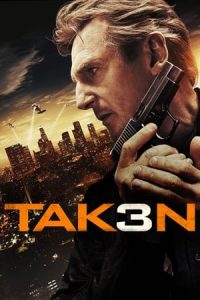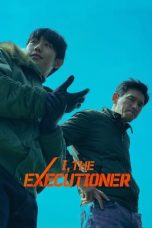- Source: Imperial Korean Armed Forces
The Imperial Korean Armed Forces (대한제국군) was the military of the Korean Empire.
History
= Foundation
=Succeeding the Joseon Army and Navy, the Gwangmu Reform reorganized the military into a modern western-style military. The foundation of the Imperial Korean Army started when Inoue Kaoru argued that the King should modernize the military and the commanding system in 1895. Korea established many military academies in Korea. Gojong of Korea tried to install his guards, but because of the interruptions of Japan, it was hard to use the Capital Guards (Siwidae,(시위대), (侍衛隊)) as his palace guards. But when the Japanese were being interrupted by other European countries, the Siwidae was formed as Gojong's guards. The minister of the military supervises the training of the Siwidae. However, the Siwidae was disbanded in August of that year for failing to stop the Japanese from assassinating Empress Myeongseong.
= Russian instructors
=Following Min Young-hwan's journey to Russia, he brought 14 Russian military instructors led by Dmitry Putyata in October 1896. Minister of Military Yi Yun-yong requested training 2,200 men to be trained by these instructors. Russian instructors picked 800 men and specially trained these men. By February 1897, Chinwidae was expanded to 1,080 men so that Gojong's return to his palace would be easier.
= Era of Gwangmu Reform
=After proclaiming the empire, Gojong consolidated his absolute control over military by the establishment of Board of Marshals. By the time Gojong established the Board of Marshals, military of Korean Empire was fragmented. Even the Bobusangs, who used to work for the emperor were trying to build their own army. He thought that such fragmentation of military would be an impediment when coping the imminent crisis caused by the conflict of Russia and Japan. Many of the authorities of Ministry of Military was taken by the Boards of Marshals as a result.
As a way to increase and maintain the Imperial authority, the Imperial government decided to expand Siwidae, stationed at Seoul. On 27 May 1898, the two battalions of Siwidae were integrated to one regiment, and Lieutenant Colonel Cho Tong-yun was appointed as the commander of the 1st Siwi Regiment. In July, an artillery battalion armed with modern cannons was formed as an independent company. Starting from August 1899, the Imperial government recognized the need to expand Siwidae even further so that the Siwi regiment would be a proper combat unit. Cavalry battalion consisting 408 men was formed. Moreover in December 1900, the artillery company was expanded to battalion and was subordinated to the regiment. With the expansion of artillery, one platoon of military band was established. Siwidae was even further expanded in February 1902, as one more Siwi Regiment was established. By this time, Siwidae totaled about 3,000 men.
= Under Japanese Pressure
=At the dawn of the Russo-Japanese War, Japanese forcefully signed the Japan–Korea Treaty of 1904 and made supply in Korea much easier. They not only stationed Japanese Korean Army in Yongsan, but also established a military base in Dokdo. In May 1904, Japanese declared official deployment of their army in Korea and started to minimize the Korean army. They stated that using 43 percent of the total tax expenditure in the army was extravagant, stating that Japanese forces will be the proxy for the Imperial Korean Army as armed force.
As the Japanese victory seemed apparent, Japanese confiscated most of the rights of the Board of Marshals, and even disbanded the organization in late 1904, weakening the authority of the emperor. Other than the dissolvement Board of Marshals, the Gungichang was disestablished, and Ministry of Military went through further reduction.
Organization
The military system of the Korean Empire consisted of imperial guards, central troops, and provincial troops. It consisted of infantry, artillery, machine gunners, and cavalry. Unlike in the Joseon Dynasty, service was voluntary.
= Ministry of Military
=In 1895, the government established the Ministry of Military as part of the Gabo Reform. The job of the ministry was to control the military government and supervise military forces and bases. The first Minister of Military was Cho Hui-yon.
= Board of Marshals
=By Gojong's intention to enhance the authority of the emperor, he commissioned himself as the Grand Field Marshal and became the supreme commander of army and navy in June 1898. Next year, Gojong established Board of Marshals in his palace, while weakening the authority of the Ministry of Military.
= Training
=The Imperial Korean Army had 44 barracks, formally training in marksmanship and drills. Foreign military officers like the Russians volunteered to train the soldiers. Aside from the military academies, there was also the need to educate new officers. In 1896, the military established the Yeonmugongwon (연무공원,鍊武公院), the Military Academy of the Korean Empire, with an officer training program to begin making the Imperial Korean Army more on par with that of the Chinese and Japanese.
The purpose of the training was to make troops more useful on the battlefield. Officers higher than company leaders were responsible for enlisted men and officers' training. Also, training was done in many environments and in many different ways to make the troops more suitable for war.
Military Academy of the Korean Empire
On 1 July 1898, the Military Academy of the Korean Empire was established and subordinated to the Ministry of Military. Then on 22 June 1899, the academy became subordinated to the Board of Marshals as an effort of Gojong solidifying the military of Korea. The staff consisted of 1 major as the principal, 1 adjutant, 1 surgeon, 1 head instructor, 3 instructors, and 8 assistants. Mostly, principal was selected from military officers, who were educated abroad. Cadets were healthy and wise 20–30 years old, who got a recommendation from an officer. 495 cadets were commissioned as officer after their graduation. 291 out of 495 commissioned cadets were deployed in Jinwidae or Siwidae. Even though the academy was an academy for education of nationalist officers, not all of the graduates were Nationalists. This was because some sons of Yangbans saw entering the academy as a way for an assured career. Despite not every cadet was motivated by their nationalist sentiment, many graduates of the academy joined the Righteous army, and opposed Japanese colonization.
= Imperial Korean Army
=In 1897, the Imperial Korean Army comprised the central army and the provincial armies. It was as part of strengthening the Korean Empire's National Defense. The central army's backbone is the Imperial Guard consisting of the Attendant (Chinwidae, (친위대), (親衛隊)), and Retinue (Howidae, (호위대)), (扈衛隊)) Guards, and the Capital Guard. The central army was directly under the Board of Marshal's member, Marshal Jung Ae-Kun to defend the emperor and the capital city of Hanyang. The provincial armies (Jibangdae, (지방대), (地方隊)) and the garrison guards (Jinwidae, (진위대), (鎭衛隊)) defend the borders. With the central and provincial armies, the army grew immensely to 28,000 before 1907.
In 1904, the editor of Jeguk Sinmun criticized the incapacity of the army that foreigners employed their foreign army instead of the Korean Army, which shows that the Korean army is under the standard.
Central Army
In 1895, the Imperial Attendant Guard served as the army's core and palace guards. The Attendant Guard grew to two battalions of 1,700 troops, each battalion consisting of companies of 220 men. In March 1896, Gojong added three more battalions to the Attendant Guard, establishing a total of five battalions with 4,400 men. The Ministry of the Interior assigned the 3rd battalion as the Imperial Retinue Guard. They were directly in charge of escorting the Imperial Family nearby, and Gojong was in charge of the Retinue Guard before the Gabo Reform. But after the reform, the Ministers of the Palace, Military, Finance, and Education concurrently holds the position of commander of the Attendant Guard. They reorganized the Retinue Guard into an engineer corps. Still, they disbanded due to unstable domestic situations. On April 22, Gojong reorganized two battalions into one regiment divided by ten companies which followed the Russian military system. It consisted of one independent battalion, and another battalion into a cavalry battalion. In 1900, Gojong reestablished the Retinue Guard with 730 soldiers. In 1902, the Attendant Guard expanded to two regiments.
In 1897, the military reestablished the Capital Guards to serve as part of the central army and as the Gyeongungung (경운궁), (慶運宮)) palace guards. It consisted of some units of the Attendant Guard with one battalion of 1,000 men divided by five companies as its organization method and recruited Russian officers to train them. It soon expanded into a regiment of 1,070 troops, with up to 200 guards each company. Then each regiment has expanded into three infantry battalions of 3,000 troops and one artillery battalion of 652 men consisting of one artillery company and two mountain artillery companies. As of October 1902, the military established an additional regiment making two regiments and one independent cavalry battalion of 4,300 troops. Each regiment has four infantry battalions, two artillery battalions, and a cavalry battalion under the direct control of the Board of Marshals, such as the 1st Siwi Regiment. Then it grew to a total number of troops was 4,672 men, 400 cavalry, and 102 military bands, totaling 5,174 men.
Provincial Army
The Board of Marshals administers the provincial armies. In May 1896, they expanded and divided them into eight battalions ranging from 200 to 600 troops and assigned battalion commanders (majors) to command them. But in September 1896, the standard number of troops in a unit drew to 400 troops, and they expanded into fourteen battalions with 5,600 troops. They also served as a transitional military unit to reorganize outdated soldiers into the first modern provincial army, the Garrison Guard. On June 30, 1900, King Gojong ordered the Board of Marshals to incorporate some provincial battalions into the Garrison Guard. At first, the military deployed one garrison guard battalion to Jeonju and Pyongyang, and each battalion consisted of two companies. However, in the case of the garrison guard battalion in Pyeongyang, which was in charge of the defense of the north, it followed the central army method of one battalion of 1,000 men divided by five companies. The Garrison Guard forces grew significantly to prevent foreign interference and stabilize the regime. In July 1900, the army established 18 battalions into six Garrison Guard regiments with headquarters in Ganghwa, Suwon, Daegu, Pyongyang, Bukcheong, Uiju, and Jeju. Which then in August 1901 expanded into six regiments totaling 18,000 soldiers.
= Imperial Korean Navy
=In 1903, the government of the Korean Empire purchased its first modern ship, the Yangmu. The Yangmu, however, was not as efficient as it looked because of its previous use as a cargo ship. For the reasons above, the government ordered the construction of a more efficient ship, the Gwangje. The annexation of Korea by the Empire of Japan, however, disrupted Korean naval tradition from 1910 until 1945.
Policies
= Retirement
=Imperial Korean Army had a retiring age. Colonel-General did not have a retiring age, Lieutenant General should retire at 70, and Major General should retire at 65. Senior Officers should retire at the age of 54, Captain should retire at the age of 48, and First lieutenant, Second lieutenant, and Non-commissioned officer should retire at the age of 45. But these retiring age can lengthen.
From 1909, personnels after the retirement got pension. Lieutenant Generals got 480 Hwan, Major Generals got 420 Hwan, Colonels got 360 Hwan, Lieutenant Colonels got 300 Hwan, Majors got 240 Hwan, Captains got 180 Hwan, First Lieutenants got 144 Hwan, and Second Lieutenants got 120 Hwan. Personnels after the retirement should notify in order to get the pension. If the recipients of pension commits serious crime or lose the allegiance of Korea, pension was not given any more.
Budget
The Korean Empire had used a lot of money as army budget. Army Budget of Korean Empire from 1895 to 1905:
Dissolution
After Japan's victory in the Russo-Japanese War in 1905, the Japanese forced the Korean ministers to sign the Japan–Korea Treaty of 1905. As per the treaty, the Korean government disbanded the Navy and reduced the numbers of the Imperial Army's City Guards and the Garrison Guards. The total number of Garrison Guards was less than 3,000. Their ships, such as the Guangjae, transported coal from 1941 until Korea's independence from Japan. The army disbanded on August 1, 1907, as per the Japan–Korea Treaty of 1907. From midnight, it rained in Seoul. There was an order to gather in Namdaemun. In Namdaemun, Major Park Seung-hwan committed suicide out of guilt for not protecting the country. His death incited the Korean Army to loot their armories, that was confiscated by the Japanese earlier, and fight against the Japanese army, beginning the Battle of Namdaemun. Still, the Japanese anticipated this and suppressed them after nearly four hours of fighting. 13 officers and 57 enlisted were killed as a result of the battle. On August 30, 1907, many officers were removed from their position. Emperor Sunjong's incorporated the remaining soldiers into the Imperial Retinue Guard, which continued even after the annexation in 1910. After disbanding the central army in 1907, the provincial armies gradually separated. As a result, the provincial soldiers joined the Righteous Armies before the disbandment. The Military Academy was minimized in size that number of new cadets became 15. The academy was finally disbanded in September 1909. Remaining cadets were sent to Imperial Japanese Army Academy. After the dissolution, some cadets who studied abroad returned Korea and served under tight Japanese intervention and served under the Joseon Infantry Division, while some led the independence movement.
Ranks
Weapons
After signing the Treaty of Ganghwa, Japan, Qing, the United States, and the European nations started importing modern weapons such as rifles, artillery, and machine guns in 1883 until its annexation in 1910. From 1887, Gojong even tried to locally manufacture weapons, which never succeeded.
= Rifle
== Pistol
== Artillery
== Melee
=Ships
Lighthouse Tender
Gunboat
See also
Korean Empire
Joseon Army (late 19th century)
Joseon Infantry Division
Gwangmu Reform
References
Bibliography
Cho, Phil-gun (2021). "대한제국군과 육군무관학교의 민족군사(民族軍史)적 의의". 한국군사학논총. 10 (2): 49–74 – via KCI.
Keltie, J.S., ed. (1900). The Statesman's Year Book: Statistical and Historical Annual of the States of the World for the Year 1900. New York: MacMillan.
Kim, Won-Mo (2002). "한국의 영국 축하사절단 파견과 한·영 외교관계". The Oriental Studies (32): 87–126 – via KCI.
Lee, Seongjin (2009). 구한말의 호위제도 고찰 (in Korean). 한국경호경비학회지.
Imperial Korean Ministry of Military (1906a). Military Manual for Infantry (PDF) (in Korean).
Imperial Korean Ministry of Military (1906b). Military Manual for Tactic (Part 1) (PDF) (in Korean).
Imperial Korean Ministry of Military (1906c). Military Manual for Tactic (Part 2) (PDF) (in Korean).
Hulbert, Homer (1904). The Korea Review.
Institute for Military History (2005). 한말 군 근대화 연구.
Kim, Won-Mo (2002). "한국의 영국 축하사절단 파견과 한·영 외교관계". The Oriental Studies (32): 87–126 – via KCI.
Kata Kunci Pencarian:
- Perang Pasifik
- Perang Dunia II
- Douglas MacArthur
- Sejarah militer Jepang
- Daftar perang dan bencana menurut korban jiwa
- Daftar karya tentang Perusahaan Hindia Timur Belanda
- Imperial Korean Armed Forces
- Korean People's Army
- Battle of Namdaemun
- Korean Army
- Lebanese Armed Forces
- List of militant Korean independence activist organizations
- Armed Forces Day
- Belgian Armed Forces
- List of wars involving Japan
- Korean Empire
The Hunted (2003)
Taken 3 (2014)
All Fun and Games (2023)
Logan (2017)
Resident Evil: The Final Chapter (2016)
No More Posts Available.
No more pages to load.














